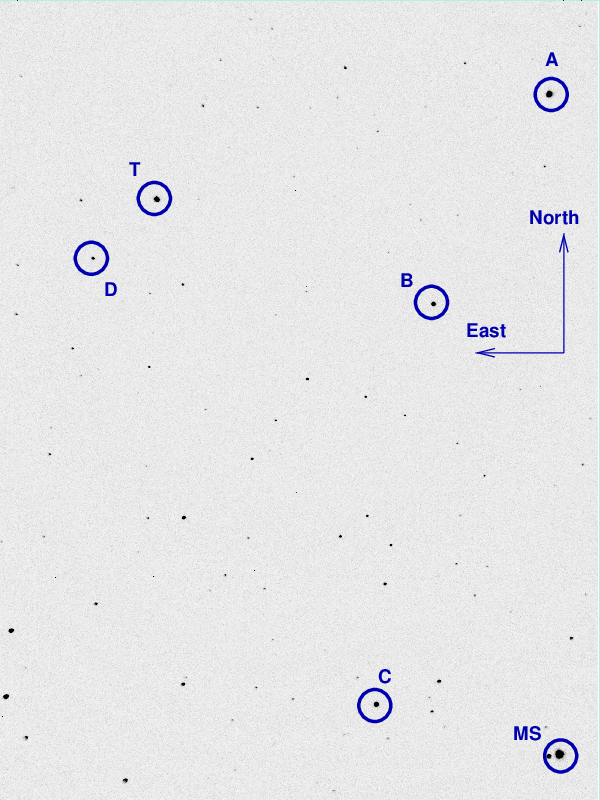
On the night of Aug 10/11, 2024, under very poor conditions, I acquired images of the recurrent nova T CrB. This star undergoes outbursts at long intervals of 80 years or so. Its next outburst is predicted to occur soon, perhaps in 2024, and so I've joined the crowd who are monitoring it.
Tonight's weather was bad, and I was only able to acquire images for 20-30 minutes through holes in the clouds. The target is very slowly rising, but still at quiescent levels.
This recurrent nova brightens from by about 8 magnitudes (!), from V = 10 to about V = 2, around every 80 years. Will we see another outburst this summer?
These observations involved:
Notes from the night:
The picture below shows a cropped image of the field of T CrB from Jun 14/15, 2024. The field of view is about 20 arcminutes across.

I've marked the location of several comparison stars, with magnitudes and names taken from the AAVSO's chart.
star name B V
------------------------------------------------------
A 000-BJS-901 11.190 10.566
B 000-BBW-805 11.840 11.187
C 000-BPC-198 13.049 12.336
--------------------------------------------------------------------------
When the target is centered, the finder TV shows this field:

Here's the sky background over the course of the run. I only opened briefly.
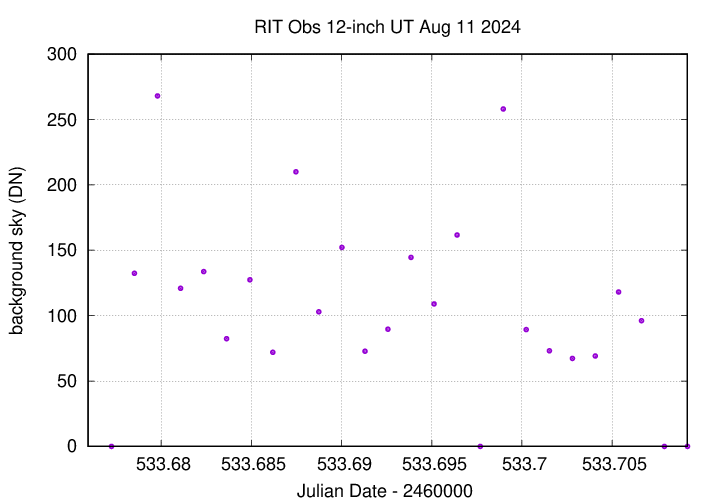
The FWHM was decent when I could see stars.
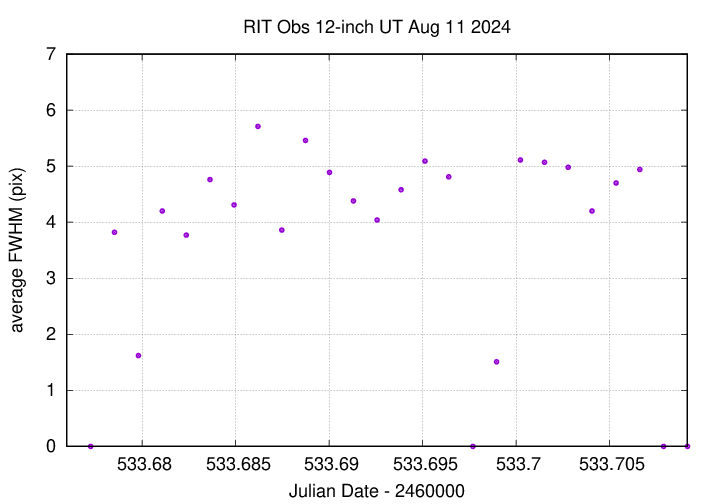
The graph below shows changes in the photometric zeropoint of an ensemble solution of the instrumental magnitudes over the course of the run. I discarded quite a few of the poor images to isolate the few not-so-bad ones.
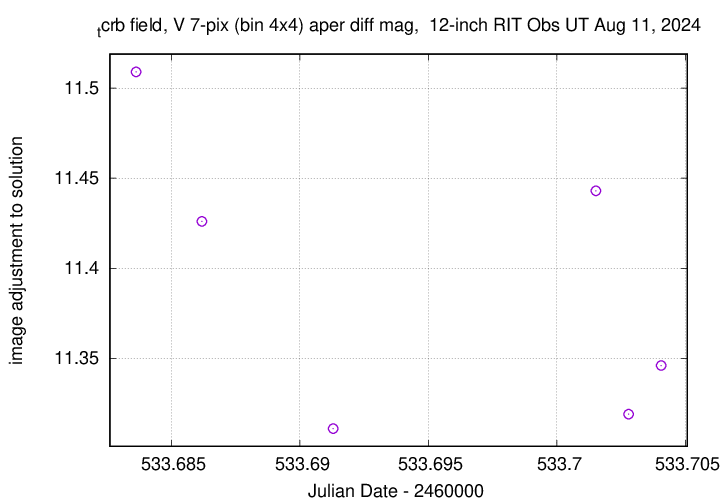
Using aperture photometry with a radius of 7 pixels in V filter (binned 4x4, each pixel is 1.036 arcsec, so a radius of 7.3 arcsec), and 7 pixels in B filter (binned 4x4, each pixel is 1.036 arcsec, so a radius of 7.3 arcsec), I measured the instrumental magnitudes of a number of reference stars and the target. Following the procedures outlined by Kent Honeycutt's article on inhomogeneous ensemble photometry, I used all stars available in each image to define a reference frame, and measured each star against this frame.
Sigma-vs-mag plots show that the floor in V-band was about 0.010 mag, which is bad. In B-band, it was 0.014 mag, which is awful. I probably wouldn't report these measurements unless they might help to isolate the start of an imminent outburst.
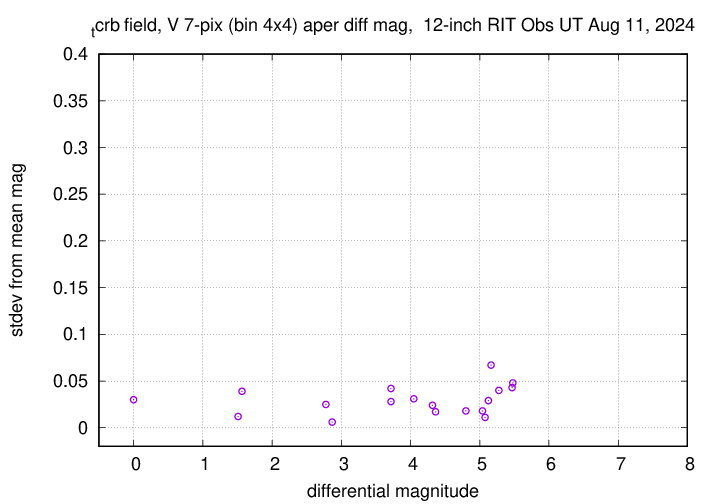
The measurements show that the target is rising very slowly over the last week, but still at quiescent levels.

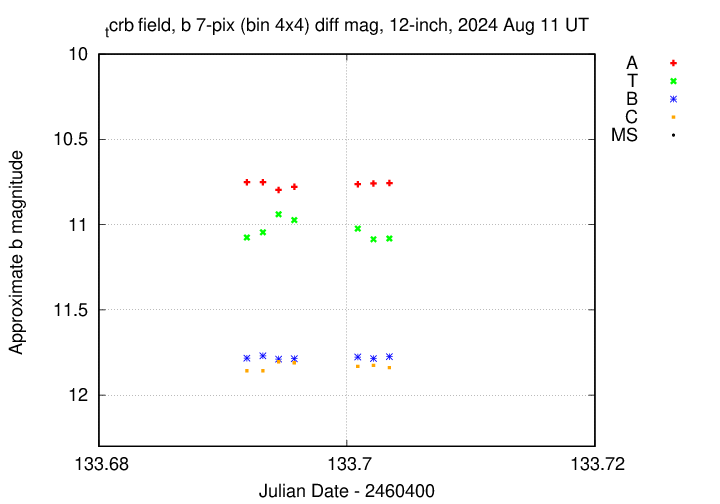
I've submitted these measurements to the AAVSO.